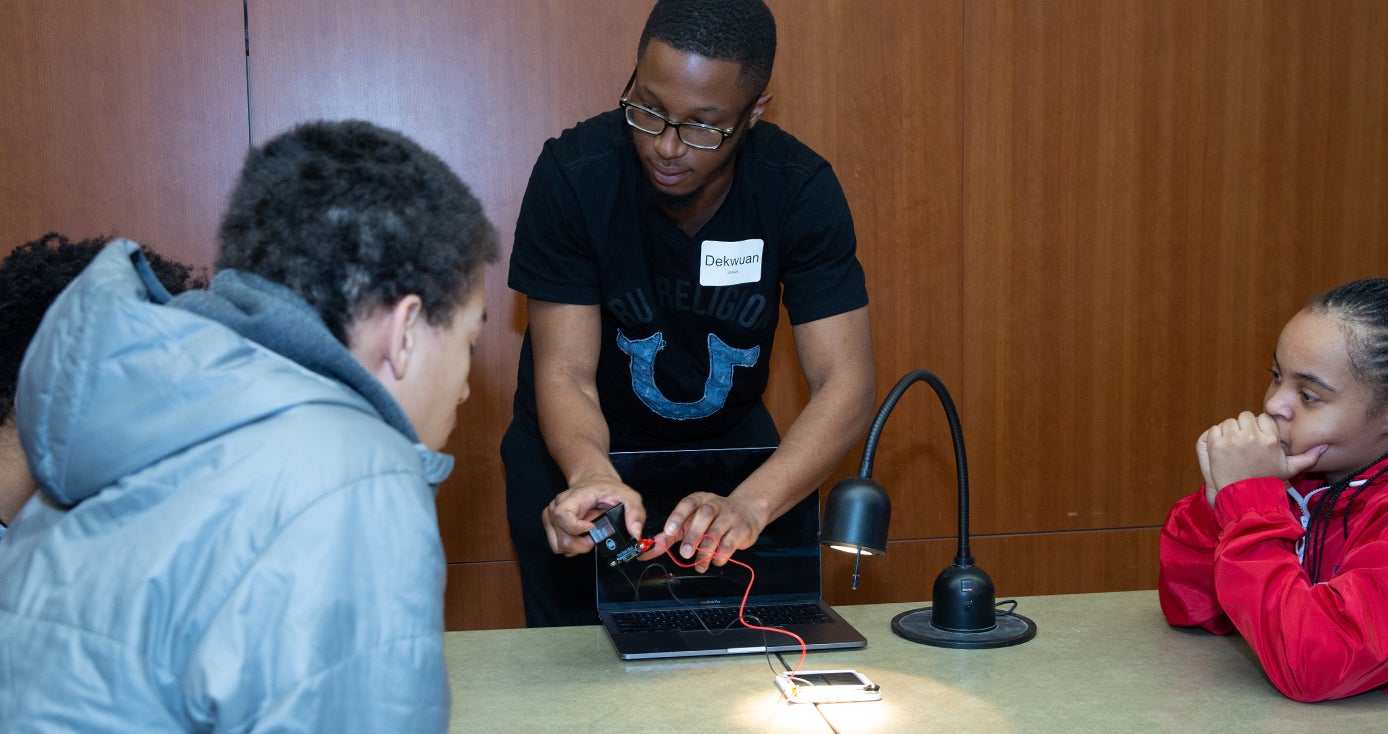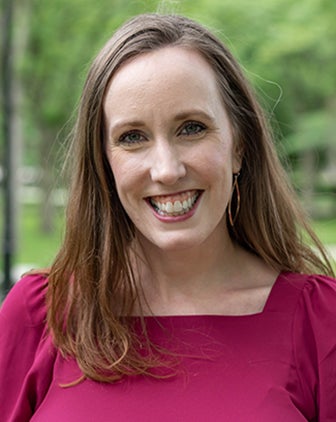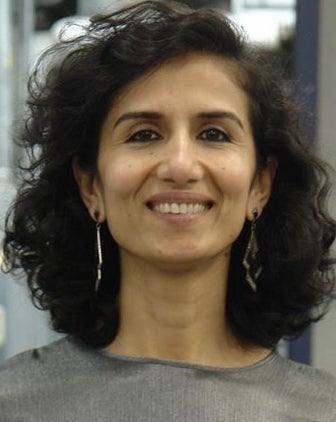
Subscribe to Pittwire Today
Get the most interesting and important stories from the University of Pittsburgh.Researchers Address the ‘Leaky Pipeline’ to Academic Science
In theory, there’s a straightforward path towards an academic STEM career. Remain focused academically, pay special attention to math and sciences, find mentors and keep up the work until you’re publishing original research findings, being selected for grants and making a mark in your field.
In practice, for women and those from backgrounds and ethnicities that are underrepresented in the sciences, the pathway to entry and retainment often includes obstacles that arise from how they are seen by others in these disciplines and how those perceptions affect how they see themselves.
“There’s been a lot of data in the past five to 10 years about the leaky pipeline in academic science,” explained Sarah Hainer, an assistant professor who studies gene regulation and principal investigator of the Hainer Lab in the Department of Biological Sciences in the Kenneth P. Dietrich School of Arts and Sciences.
“Women make up about 51% of the population. In biomedical sciences, women represent 50% or more of graduate students in programs. Then, the numbers drop when you go to postdoc. When you go to tenure stream or, even worse, tenured faculty, you get down to the single digits. This is from a long-standing cycle of not supporting women in science. If we add another dimension of identity to gender, such as race, the numbers become abhorrently low for these various academic career stages.”
In an attempt to help balance disparities, last year Hainer teamed up with scientists from different universities to focus on reducing bias in academic science through an intersectional lens as part of the eLife Community Ambassadors program, which connects diverse, early career researchers from across the globe for work designed to promote responsible behavior in science.
In June, the group released “Guidelines Toward Inclusive Practices in Academics,” a multilingual set of recommendations designed to guide leaders in academic science toward more inclusive practices in hiring, mentoring, writing reference letters, manuscript reviews and grant reviews. The group also released a lab manual to promote inclusive practices in academia, which provides a template designed to increase communication between lab members and serves as a resource for difficult conversations surrounding a lab’s culture and operations.
Although there’s much ground to cover, Hainer said the group focused on the five chosen areas for recommendations because they can impact emerging scientists from their first undergraduate year until after graduation and entry into the workforce. Several recommendations focus on adjectives used to describe candidates in recommendation letters, manuscript reviews and grant reviews and how they can reflect bias.
Intersectionality in science
Hear about Hainer‘s work on June 24 at 11 a.m. ET during a live webinar, “Intersectionality in Science.” The talk will cover the basics of intersectionality, discrimination, bias, microaggressions, historical discrimination within academic science and how to be more inclusive.
“We’ve seen in reference letters people use adjectives for women that are ‘caring, kind and helpful,’ whereas for men, people use adjectives such as ‘smart, driven, successful.’ They don’t necessarily mean to not be supportive, but these adjectives describe women in an emotional way and men in an analytical way about their abilities. That ultimately leads to individuals hiring men over women,” she said. “Gender disparity is the most well-studied gap in the leaky pipeline. We took it a step further to say it’s not just women who are discriminated against in these letters, it’s everyone that’s not a white male.”
Chandralekha Singh, a professor in the Department of Physics and Astronomy, also in the Dietrich School, and director of the Discipline-Based Science Education Research Center, said those impressions of early career scientists are likely being formed as soon as students enter college. In physics, in particular, she noted that women only represent 20% of students in graduate programs.
In 2018 Singh coauthored a paper published by the American Physical Society that outlines how female students with similar performance as their male peers in introductory physics courses view themselves as less capable in the subject than their performance reflects. It also explains how those views can tie back to interactions with educators.
“What we are finding is female students in classes are feeling significantly less recognized by instructors and teaching assistants than male students. They’re less likely to feel like a professor or teaching assistant told them they did a good job. They didn’t feel like it happened as much as it happened to men and that really ended up impacting their own assessments of themselves,” Singh said.
Before a student even steps foot on a college campus, they could face biased assessments made by admissions officers that steer them away from science classes and laboratories.
For Alison Slinskey Legg, a professor in the Department of Biological Sciences, and Alaine Allen, a professor in the Swanson School of Engineering, the goal is to ensure underrepresented high school students on a path toward STEM degrees are encouraged to stay the course. Last year, they were part of a multidisciplinary team that was awarded a $10 million National Science Foundation Includes Alliance grant to make Pitt’s Broadening Equity in STEM Center (BE STEM) home base for the STEM Pathways for Underrepresented Students to HigherEd Network, a national collaborative of precollege programs, STEM educators and college admissions professionals.
The effort features participation from the Learning Research and Development Center, the School of Medicine, the Hillman Cancer Center Academy, the Center for Urban Education, the School of Education and School of Computing and Information. The goal is to increase racial and ethnic diversity in STEM and create an accreditation model for precollege programs that is recognized by college admissions officers.
“Precollege programs such as MESA in California, PRIME in Philadelphia, FAME in Delaware and INVESTING NOW at Pitt have played an important role in exposing students of color to college and STEM opportunities,” said Allen, codirector of the BE STEM Center, director of INVESTING NOW and director of K-12 outreach and community engagement at the Swanson School of Engineering. “Developing a system to connect these initiatives to admissions is our opportunity to honor the legacy of the pioneers who created these programs.”
For Hainer and the group, the work continues June 24 during a live webinar, “Intersectionality in Science,” which discusses “what intersectionality is, what the basics such as discrimination, bias, microaggressions are, historical discrimination within academic science, what you should be aware of in terms of being inclusive and how to be more inclusive within academic science.”
She said the bulk of her efforts, and those being conducted throughout the university, could be seen as a course in diversity and inclusion that would benefit anyone in academia to take.
“Everyone who is in a position of leadership needs to take bias and diversity training and identify their own biases and privileges. They need to understand the power in diverse teams and what diversity brings to the success of your academic science,” she said.
“Research has shown that diverse work teams have led to more impactful scientific articles. So, it’s not just being diverse to be diverse, there’s power in being diverse. If you let conscious or unconscious biases stand in your way, then you’re preventing your own success.”




